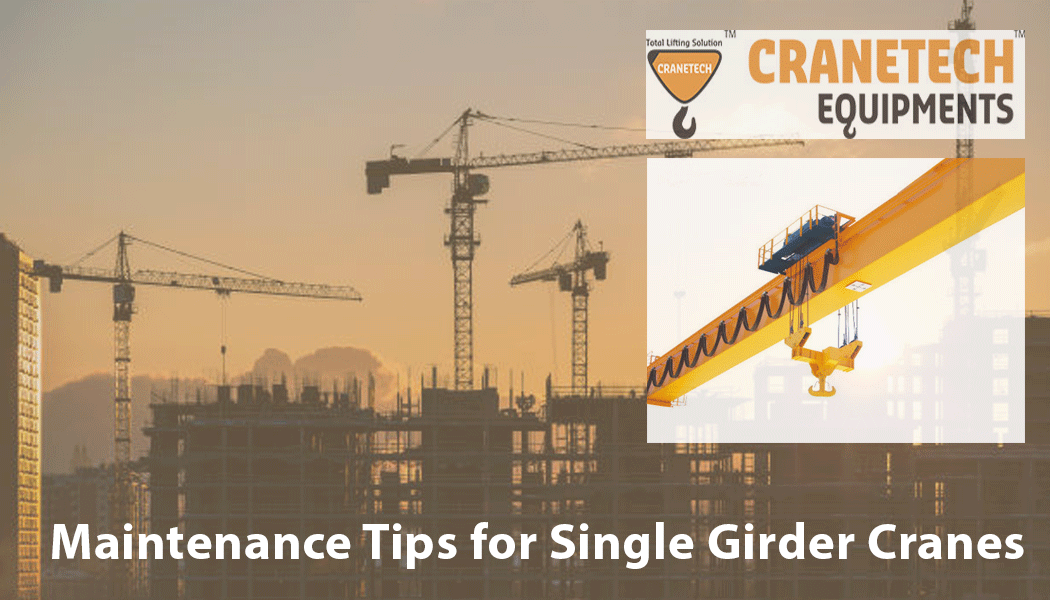
By admin / 27 Aug 2025
- Cranetech EquipmentsOverhead cranes are vital assets in many industries — from manufacturing to logistics — enabling the efficient movement of heavy loads. Among the various types, single girder overhead cranes are especially popular due to their cost-efficiency, simplicity, and ease of installation. However, like any heavy machinery, regular maintenance is essential to ensure these cranes operate reliably and safely over the long term.
Structured preventive maintenance is the backbone of effective crane care. Develop and adhere to a schedule tailored to the manufacturer’s recommendations and site-specific factors such as crane usage, load capacity, and environmental conditions. Preventive programs should include daily, weekly, monthly, and annual inspections and maintenance activities. Document all actions and findings for compliance and continued improvements.
Before every shift, operators should visually inspect the crane for signs of wear, damage, or malfunction. Daily inspection points include:

Prompt reporting and immediate resolution of identified issues protect against operational failures and improve overall crane reliability.
Never exceed the rated lifting capacity of the crane, as overloading causes premature component wear and risk of catastrophic failure. Proper training in load handling, sling and hook use, and movement control for operators prevents mechanical stress and accident risks. Routine load testing ensures safe capacity compliance and reveals early signs of hoist or trolley issues.
Maintain detailed records for every inspection, maintenance action, replacement, and incident involving the crane. Documentation supports regulatory compliance, problem prevention, and long-term planning for major refurbishments or replacements. It is also indispensable for warranty and insurance claims.
As technology evolves, upgrading specific crane components such as control systems and motors can offer higher efficiency, lower energy consumption, and smoother operation. IoT-enabled monitoring devices allow for predictive, condition-based maintenance, alerting staff before issues become operational threats.
Operators and maintenance personnel must be fully trained in both general crane operation and specific maintenance protocols. Regular refresher courses and reviews of updated manufacturer or regulatory guidelines should be conducted. Safety awareness minimizes errors and promotes a culture of proactive maintenance.
Employ detailed maintenance checklists to ensure no inspection item or procedure is overlooked. Effective checklists include: